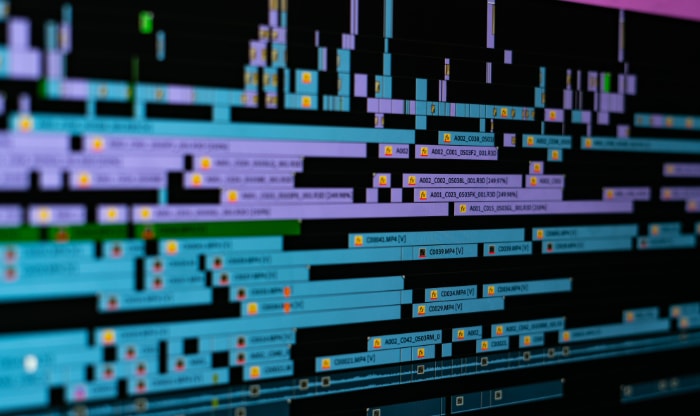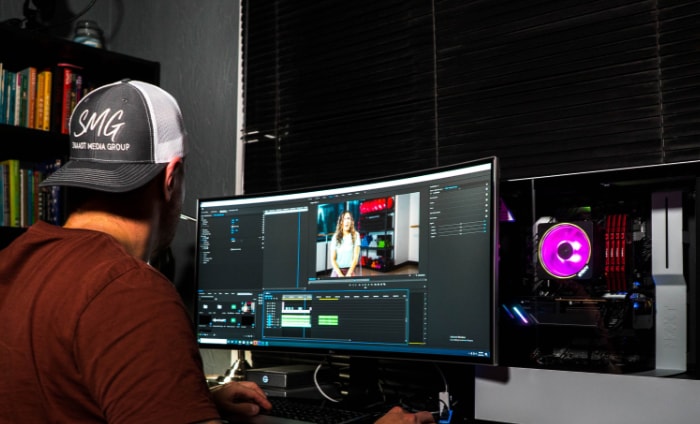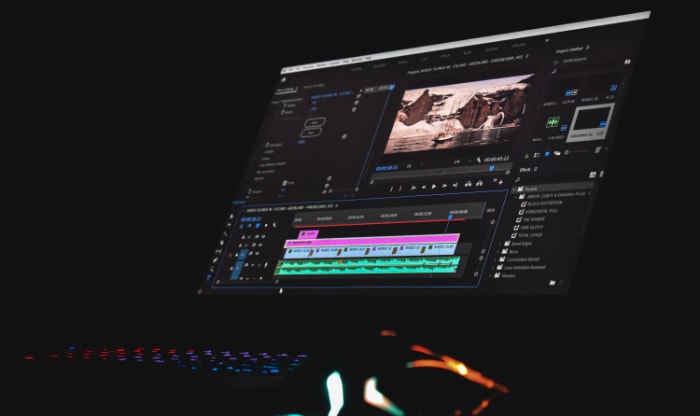Encoding vs. Transcoding: The Magic of Video Streaming

In an era where digital content has become the lifeblood of our online ecosystem, understanding the underlying technology that powers this revolution is vital.
At the heart of this digital landscape lies video processing technology, the unsung hero that ensures seamless delivery and consumption of video content across various platforms. Two fundamental aspects of this technology – encoding and transcoding – play a pivotal role in shaping our digital experiences.
Video encoding and transcoding may sound complex, and indeed they are intricate processes, but their significance is unparalleled. They form the backbone of how videos are stored, transferred, and streamed, affecting everything from the size of the video files to the quality of the video content viewed by the end-user.
In the subsequent sections, we will dissect the process of video encoding and transcoding, their roles, similarities, differences, and how they are shaping the future of video streaming.
Understanding Video Encoding
Video encoding, in its most basic form, refers to the process of converting raw video footage into a digital format. This process makes the video compatible and manageable for playback on various devices and over different network connections.
Without encoding, videos would remain in their raw, uncompressed state, resulting in enormous file sizes and impracticality for streaming or downloading.
The Process of Video Encoding
Video encoding involves a series of steps.
Role of Codecs: The cornerstone of the encoding process lies with codecs. A codec (a portmanteau of “coder-decoder”) is a program that compresses data for transmission and then decompresses it for playback. Different codecs can be used depending on the specific requirements of the video file, with some prioritizing higher compression rates to reduce file size, and others focusing on maintaining maximum video quality.
Types of Video Encoding: The encoding process can be executed using either software or hardware. Software encoding is more flexible, supports a wide range of codecs, and is generally easier to update and maintain. On the other hand, hardware encoding is typically faster and more efficient but may be limited by the specific capabilities of the hardware in use.
Conversion into Digital Format: The raw video is read frame by frame. Each frame is converted into a digital format using a codec, and any redundant or unnecessary data is removed. This results in a video file that is significantly smaller than the original, without a noticeable decrease in quality.
Popular Encoding Standards
There are several encoding standards widely used in the industry.
MPEG-2: A commonly used codec for DVDs and television broadcasts.
MPEG-4 Part 14 (MP4): A digital multimedia container format most commonly used to store video and audio, but it can also be used to store other data such as subtitles and still images.
AVI: A multimedia container format introduced by Microsoft, capable of containing both audio and video data in a file container that allows synchronous audio-with-video playback.
QuickTime: An extensible multimedia framework developed by Apple Inc., capable of handling various formats of digital video, picture, sound, panoramic images, and interactivity.
Flash Video (FLV): A container file format used to deliver digital video content over the Internet using Adobe Flash Player.
Benefits and Limitations of Video Encoding
Video encoding provides several benefits. It reduces the size of video files, making them easier to store and distribute. It also allows for customization of video parameters, such as bitrate and resolution, to better match the needs of the target device or network.
However, there are also limitations. The encoding process can be computationally intensive and time-consuming. Also, some degree of quality loss is inevitable due to the compression process, especially with lossy compression codecs.
High levels of compression may lead to visible artifacts or a noticeable decrease in video quality.
The Concept of Video Transcoding
Video transcoding, often referred to as video converting, is the process of converting a video file from one format (codec) to another.
This is done to make the video compatible with different devices or software, to reduce the file size, or to create multiple versions of a video to suit different bandwidths and platforms.
The Process of Video Transcoding
Transcoding can seem like a complex concept, but breaking it down into simple steps can help clarify its function.
Conversion from One Encoded Format to Another: Transcoding takes a video file that has already been compressed (encoded) and converts it into a different format. This can involve changing the codec, container format, or other video parameters like resolution or bitrate.
Re-encoding for Different Bit Rates (for Adaptive Streaming): In the context of video streaming, transcoding is often used to create multiple versions of a video file at different bit rates and resolutions. This allows for adaptive streaming, where the version of the video that is played can be dynamically adjusted based on the viewer's network conditions.
The Role of Transcoders: Transcoders are the software or hardware that perform the transcoding process. Like encoders, they use codecs to compress and decompress video data, but they are specifically designed to convert between different formats.
Instances Where Transcoding Becomes Necessary

Transcoding is needed in several situations, including:
Device Compatibility: Different devices support different video formats. Transcoding can be used to convert a video to a format supported by the target device.
Storage and Bandwidth Optimization: Transcoding can reduce the size of a video file or lower its bitrate to make it easier to store or stream over a network.
Adaptive Streaming: To provide the best possible viewing experience for all users, regardless of their network conditions, multiple versions of a video at different bit rates and resolutions are created. This allows the streaming platform to dynamically switch between versions based on the viewer's current network speed.
Benefits and Limitations of Video Transcoding
Video transcoding enables compatibility across a variety of devices and network conditions, and can optimize storage and bandwidth usage. However, it also comes with certain limitations.
Transcoding is a resource-intensive process that can take a considerable amount of time, particularly for high-resolution video content. Similar to encoding, transcoding can also lead to a loss of video quality, especially when transcoding multiple times or using lossy compression codecs.
Comparison Between Encoding and Transcoding
While encoding and transcoding share many similarities, their uses and effects on video data differ significantly. Here, we'll dive into their commonalities, differences, and the impact they have on video quality.
Similarities and Differences
At their core, both encoding and transcoding involve the conversion of video data from one form to another. They both utilize codecs for this conversion and play crucial roles in managing video size, compatibility, and quality. The primary difference, however, lies in their starting points and outcomes.
Encoding involves the initial conversion of raw video data into a compressed digital format, making the video more manageable for storage and streaming.
On the other hand, transcoding is the process of converting an already encoded (compressed) video into a different format or quality.
When to Use Encoding and When to Use Transcoding
Encoding is typically used at the beginning of the video creation process. It's a step that follows the capture of raw video footage and precedes the editing, distribution, and streaming phases.
Its primary goal is to reduce the video size for practical usage, without noticeably compromising video quality.
Transcoding, however, usually comes into play after the video has been encoded and is ready for distribution or streaming. Transcoding ensures that the video is accessible across different platforms and devices, or that it's suited for different network speeds.
The Impact on Video Quality
Both encoding and transcoding can affect the quality of a video. With encoding, this is largely dependent on the codec and settings used. The right balance must be found between the level of compression (which reduces file size) and the preservation of video quality.
Transcoding, however, can pose additional risks to video quality. Every time a video is transcoded from one format to another, there's a chance of quality loss. This is particularly true when the process involves a change in resolution or when a lossy compression codec is used.
Therefore, it's crucial to minimize unnecessary transcoding steps whenever possible to maintain the best possible video quality.
Role of Encoding and Transcoding in Online Streaming
Online streaming has become a cornerstone of modern media consumption, and both encoding and transcoding play instrumental roles in ensuring seamless streaming experiences. Let's explore these roles in depth.
Understanding Adaptive Streaming
Adaptive streaming is a technique used in streaming multimedia over computer networks. It works by detecting a viewer's bandwidth and CPU capacity in real-time and adjusting the quality of the streamed media accordingly.
This results in a viewing experience that's largely free from buffering and playback issues, even under changing network conditions.
For adaptive streaming to work, the original video file must be transcoded into multiple versions, each with a different bitrate and often different resolutions. The streaming server then dynamically switches between these versions as needed, ensuring the best possible quality for the viewer's current network conditions.
The Impact of Encoding and Transcoding on the Viewer’s Experience
The encoding process largely determines the potential quality of a video stream. The codecs used, the compression settings chosen, and the resolution and bitrate of the encoded video all play a significant role in defining the viewing experience.
Transcoding, on the other hand, is what allows the streaming service to offer a consistent viewing experience across a wide range of devices and network conditions.
By creating multiple versions of each video, transcoding enables the streaming server to adapt to each viewer's unique situation.
How Popular Streaming Platforms Utilize Encoding and Transcoding
Most popular streaming platforms, like Netflix, YouTube, and Hulu, heavily rely on both encoding and transcoding to deliver content to their users. They start by encoding the raw video files into a high-quality digital format, and then transcode these files into multiple versions for adaptive streaming.
These platforms have massive transcoding pipelines that process thousands of hours of video content every day, ensuring that whether you're watching on a smartphone over a cellular network, or on a 4K TV with high-speed internet, you'll have the best possible viewing experience.
Future Trends in Video Encoding and Transcoding

Video technology is an ever-evolving field, with constant advancements shaping the future of video encoding and transcoding. Here, we'll explore some of the upcoming trends.
Technological Advancements
Advanced Codecs: Newer codecs like H.265 (HEVC), AV1, and VVC (H.266) are gaining traction. These advanced codecs promise better compression rates, resulting in smaller file sizes without compromising on video quality.
Hardware-Accelerated Encoding and Transcoding: With advancements in hardware technology, more systems are leaning towards hardware-accelerated encoding and transcoding. This results in quicker processes and improved efficiency.
Cloud-Based Encoding and Transcoding: With the rise of cloud computing, video encoding and transcoding services are moving towards the cloud, offering scalability and cost efficiency. This makes high-quality video processing accessible to a wider range of content creators.
The Impact of AI and Machine Learning
Artificial Intelligence (AI) and machine learning are starting to play a significant role in video encoding and transcoding.
These technologies are being used to optimize encoding parameters dynamically, resulting in higher quality video streams at lower bitrates. They're also used in scaling and upscaling video content, enhancing video quality beyond its original resolution.
Future Challenges
Despite the advancements, there are challenges that the industry needs to overcome. These include handling the ever-increasing demand for high-resolution content like 4K and 8K, managing the high computational power required for advanced encoding and transcoding processes, and dealing with the issue of latency, particularly in live streaming.
The future of video encoding and transcoding is promising, with continuous technological advancements paving the way for better video quality, improved compatibility across devices, and enhanced streaming experiences.
However, it's also clear that the industry must continue to innovate to overcome the associated challenges and keep pace with consumers' rising expectations.
Conclusion
In the fascinating realm of video technology, encoding and transcoding stand as crucial pillars, transforming raw video footage into the smooth streaming content we enjoy on our screens every day. They ensure that the video we consume is accessible, manageable, and optimized for our viewing pleasure, irrespective of device or network conditions.
Understanding these intricate processes not only enriches our knowledge of digital media but also empowers video content creators, distributors, and technophiles to make informed decisions about video production and distribution.
It’s remarkable to consider the immense computational processes that occur behind the scenes of our simple click-on-a-play button.
The ever-evolving nature of technology and the exponential growth of online video content consumption promise an exciting future for video encoding and transcoding.
With the advent of advanced codecs, AI optimization, and cloud-based services, we're on the cusp of a new era of video technology. However, these advancements also bring forth new challenges, such as supporting ultra-high-definition content and addressing latency issues.
In the end, the goal remains unchanged: to deliver the best possible video experience to viewers worldwide. As we look ahead, one thing is clear — the importance of video encoding and transcoding will only continue to grow, forever shaping the landscape of our digital video experiences.


